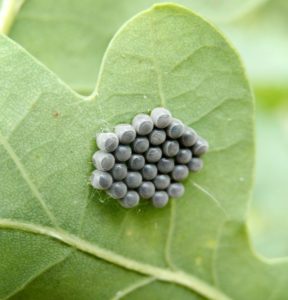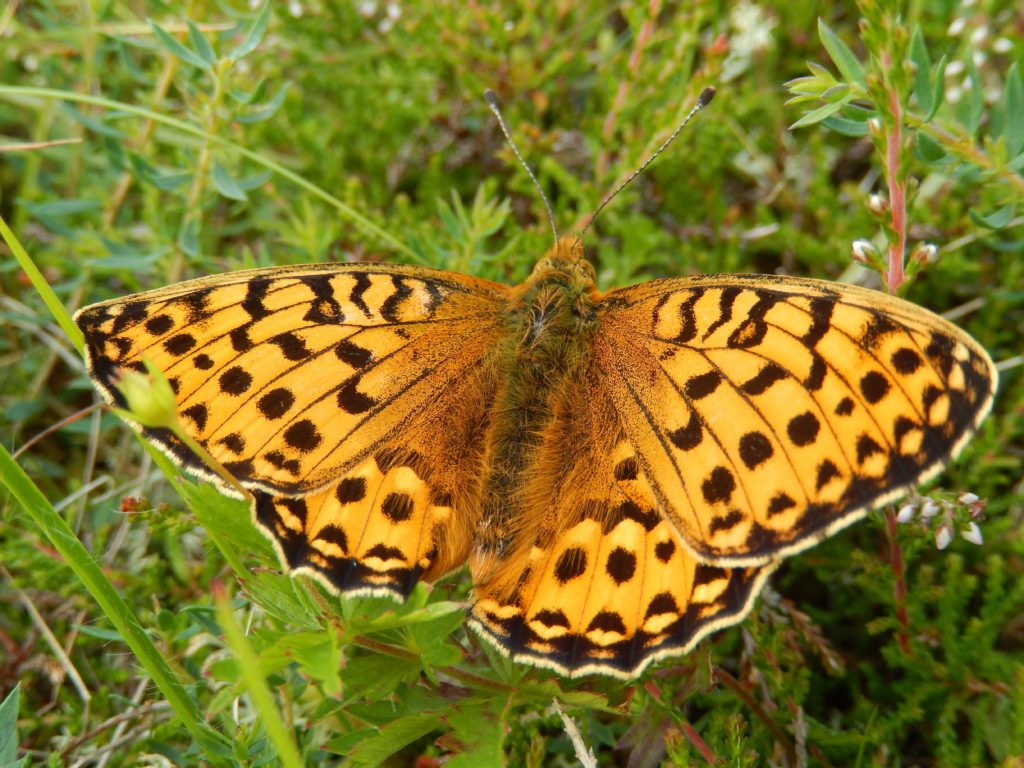
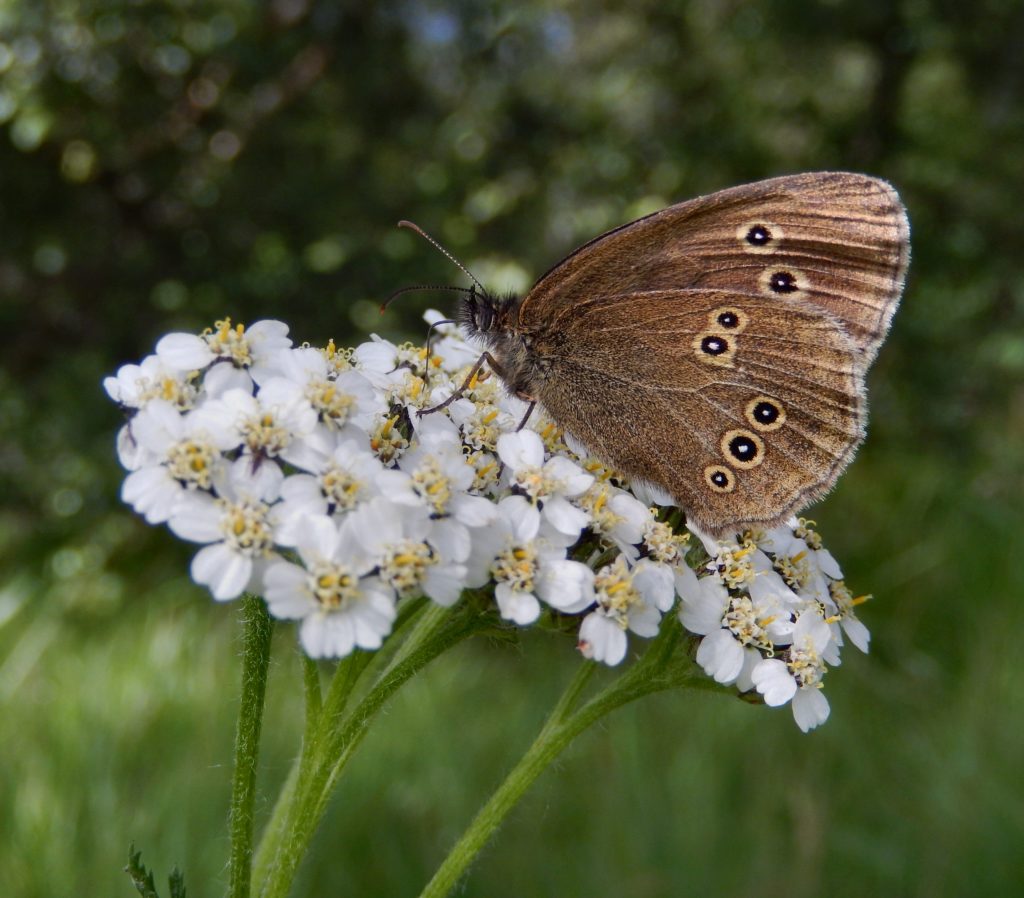
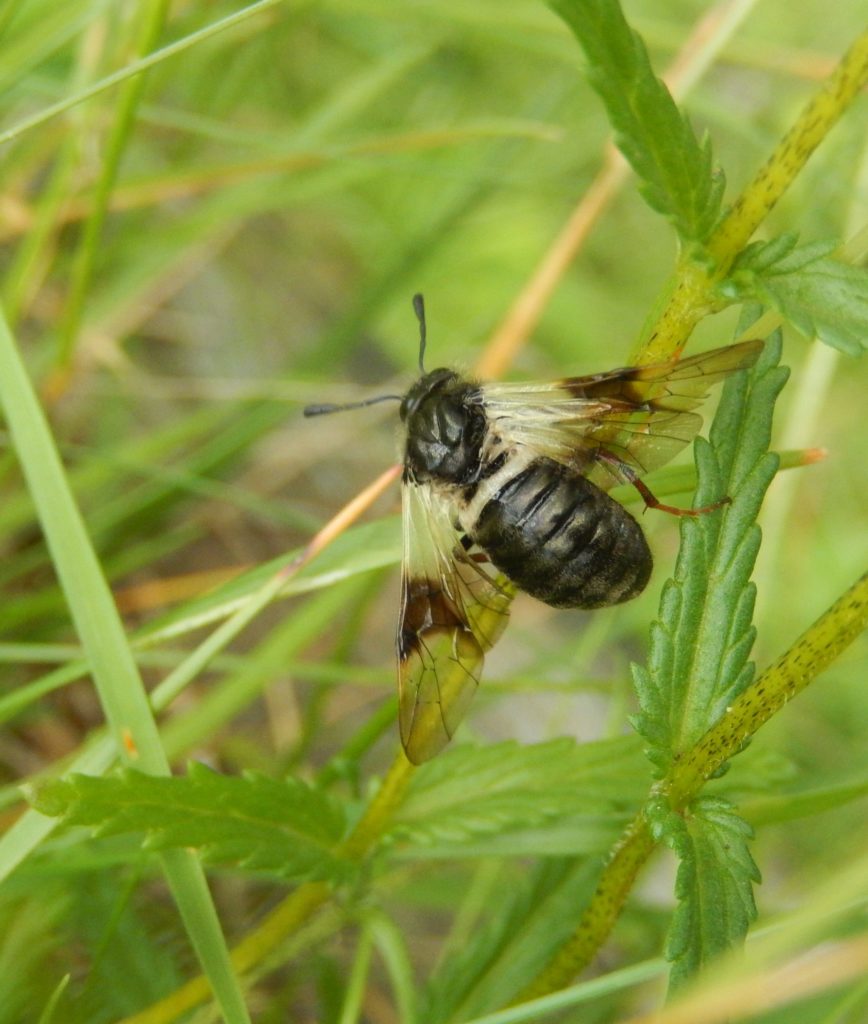
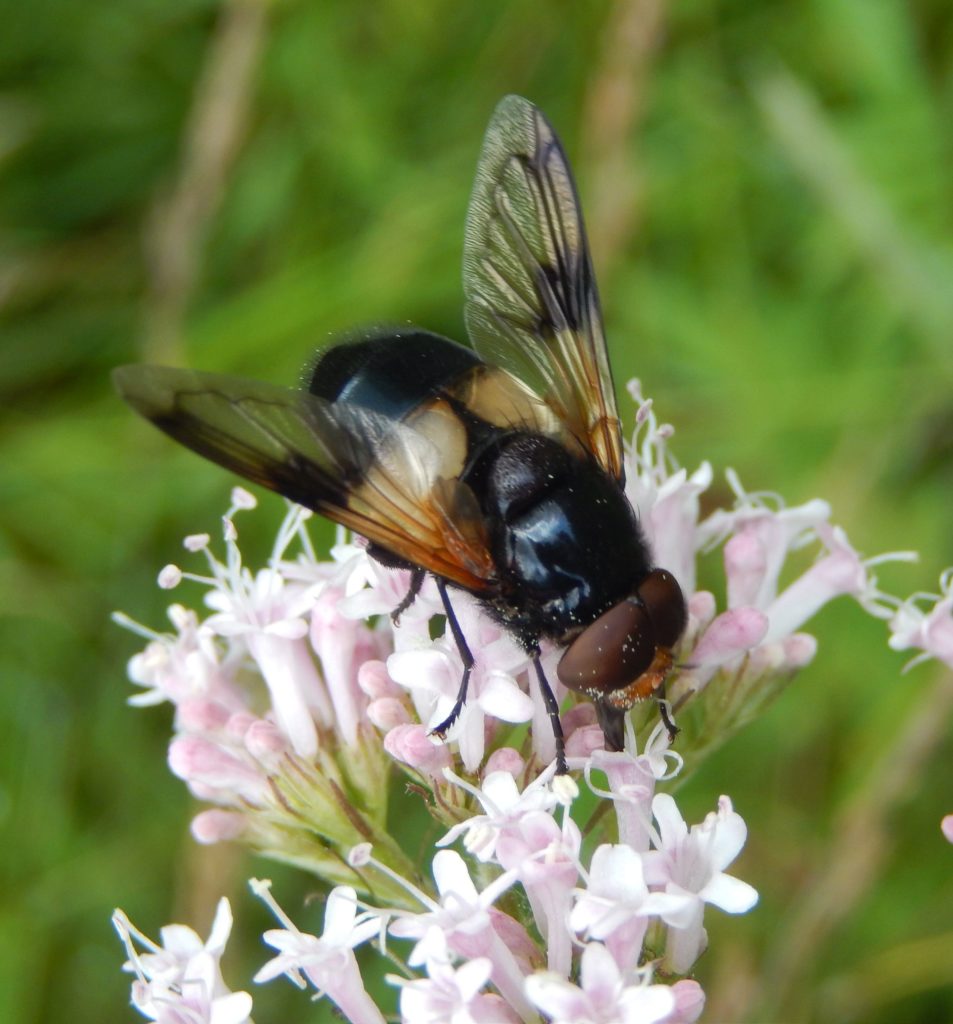
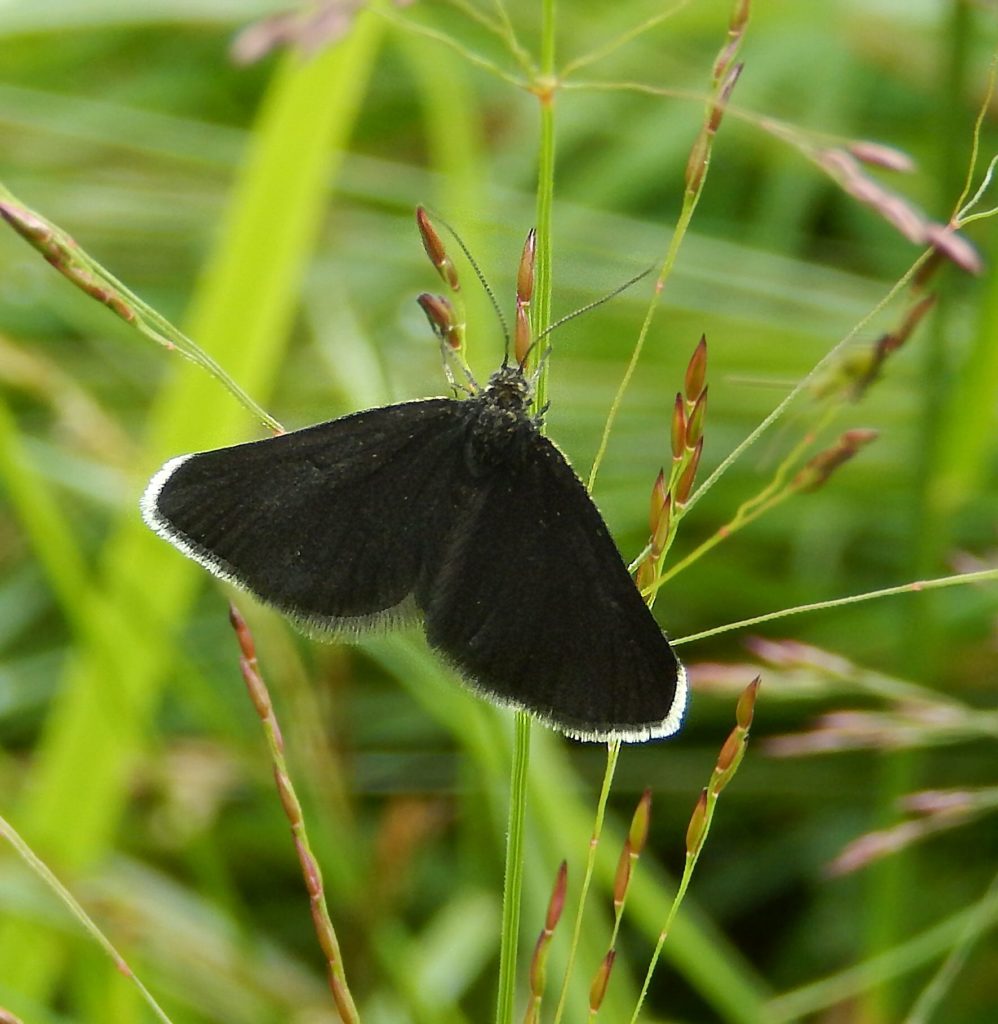
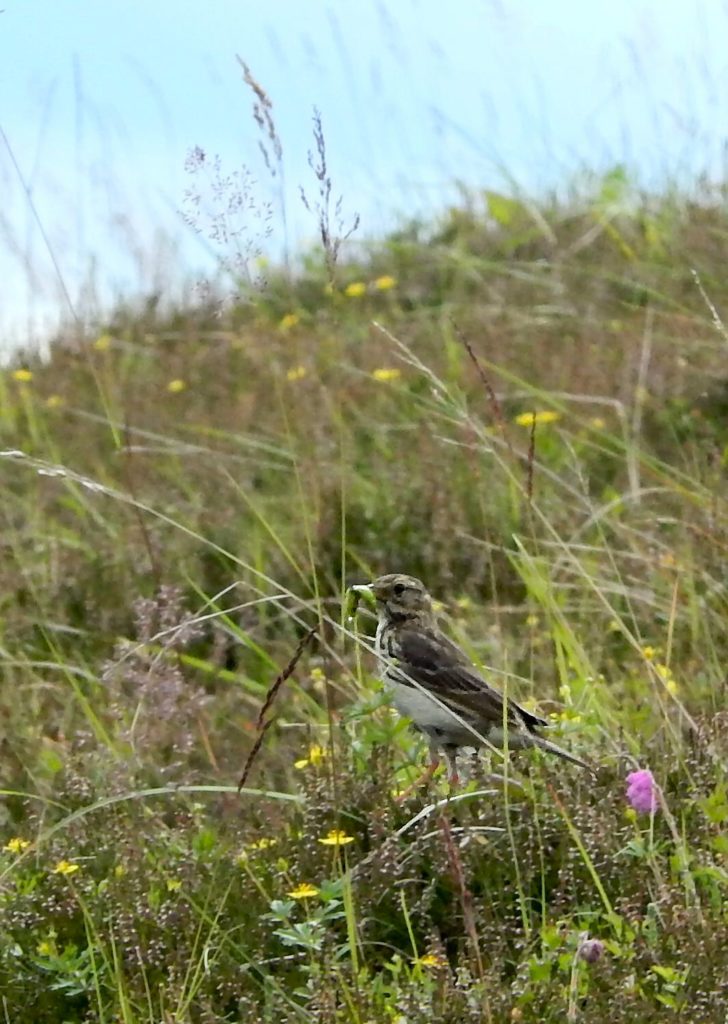

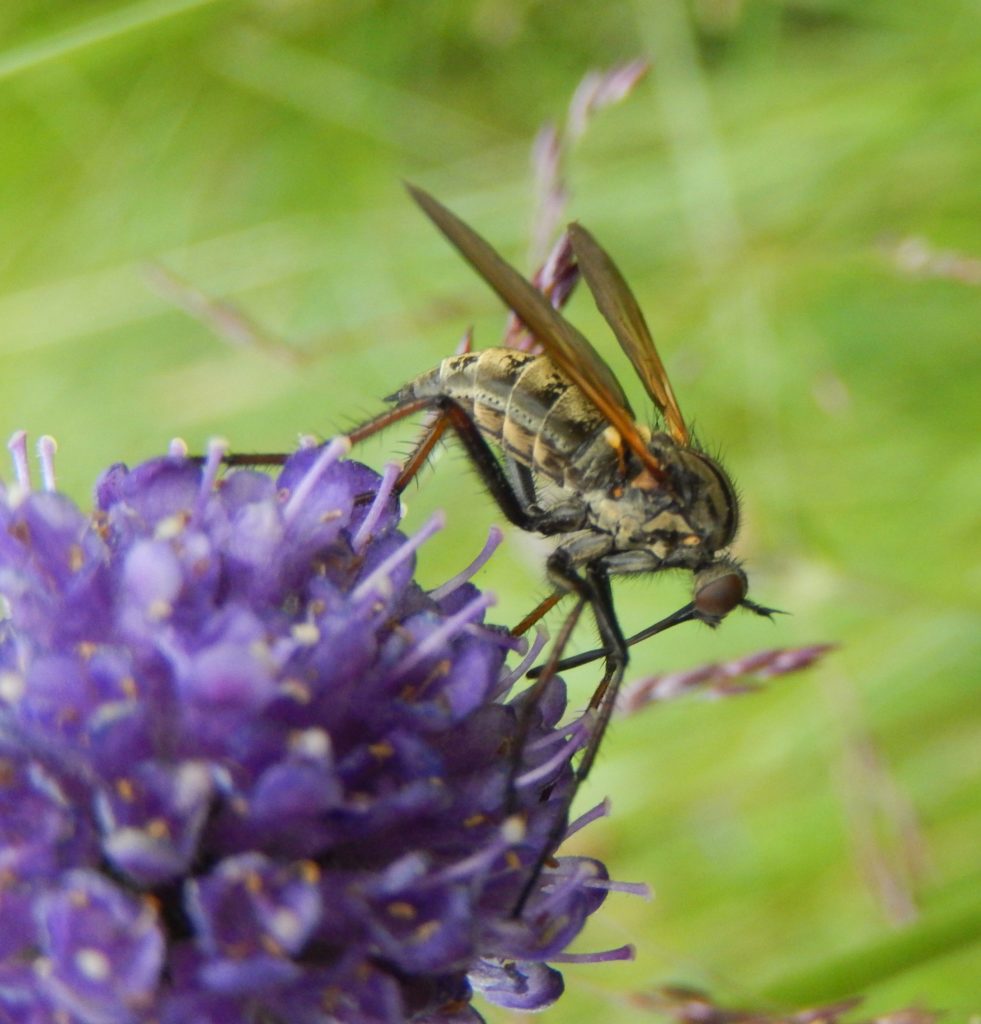
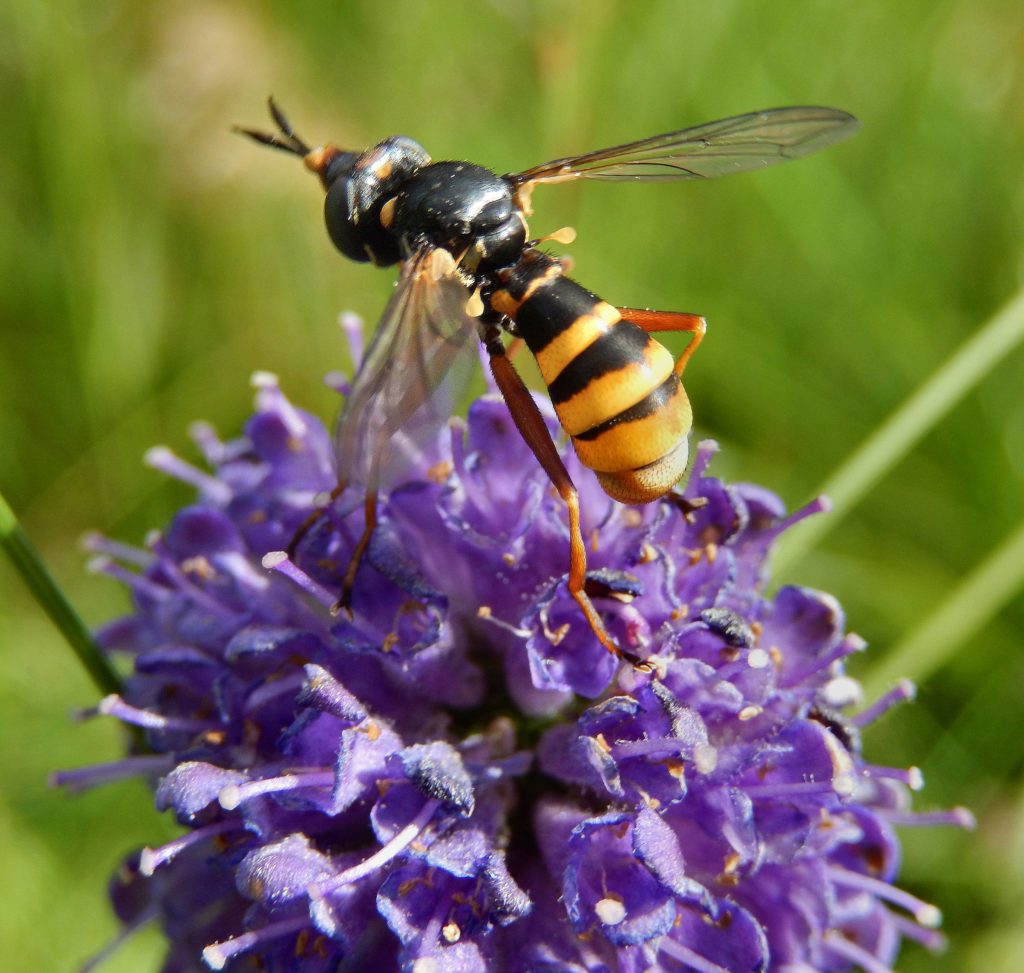
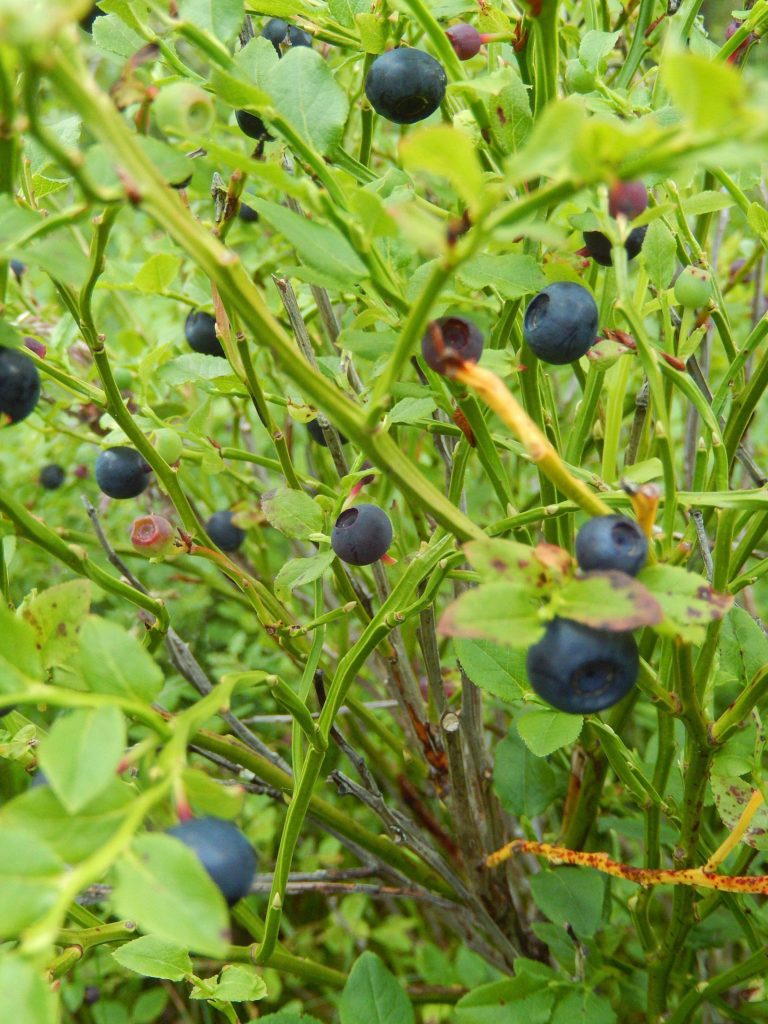
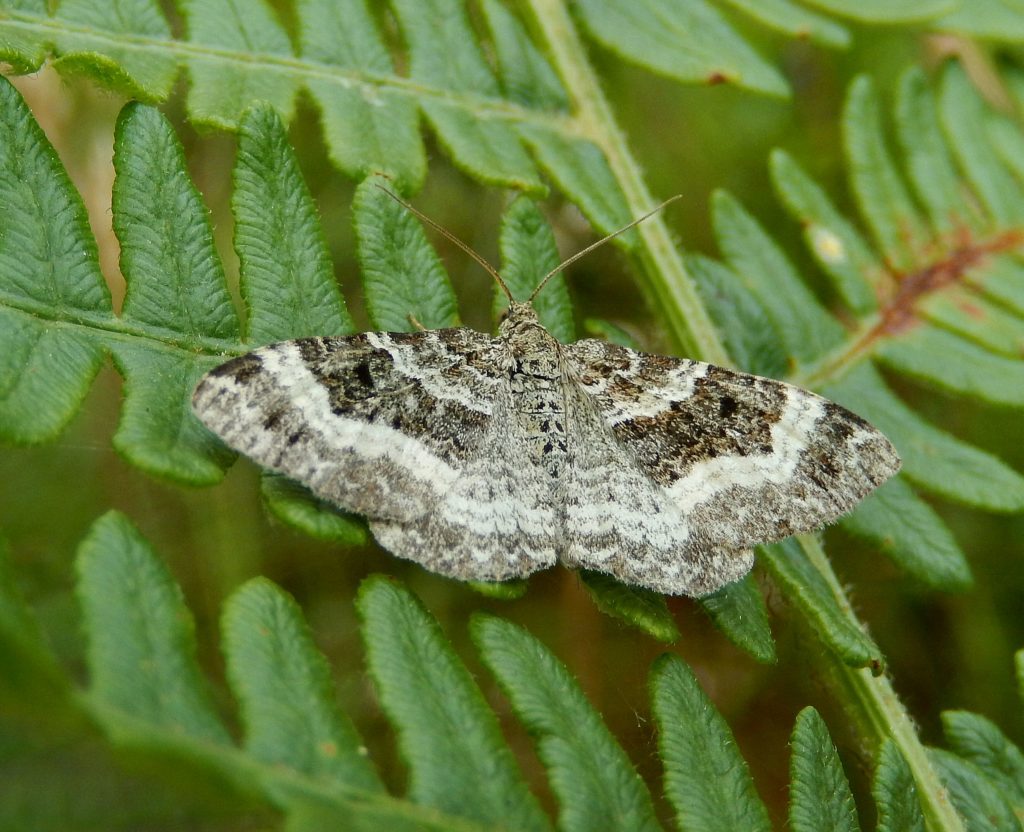
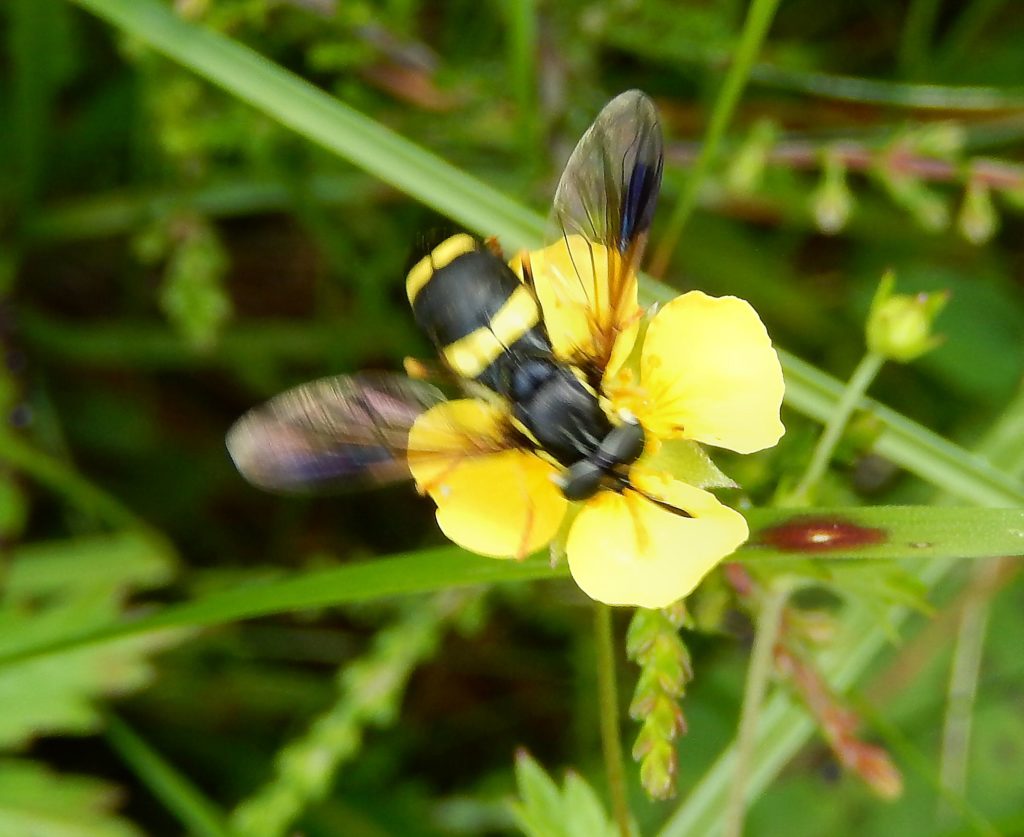












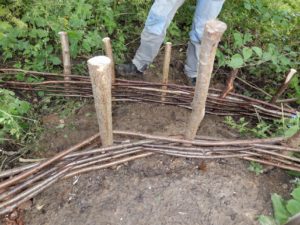
Well, you probably don’t need me to tell you that this summer – yes that was Midsummer’s day we just had – has been a teeny bit wet.
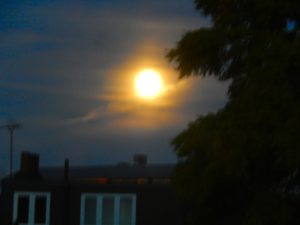
We’ve had the car park flooded repeatedly in front of the hut, and two storm channels have eroded tons of soil down the bank towards the railway.

Joking aside, we picked up some stout hazel poles and bundles of long slender binders, and sat at the top of the ramp with billhooks to sharpen the poles and cut them to length as withy-posts. We then hammered them into the very squishy mud of the main erosion channel, and did our best to weave the binders around them. They were a little dry and we heard a few ominous cracks, but in the main they wove in and out pretty well. We made two little fences with five posts each, leaving space for water to trickle below the basketwork, and indeed through it.
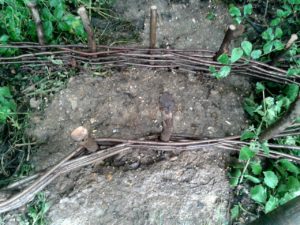
Last night there was yet another thunderous downpour, so this morning I went to have a look at whether our handiwork had helped. There was some scouring under the centre span of the front fence – overall, it looks as if the fences did a good job, but perhaps we need one more fence just at the front of the channel.
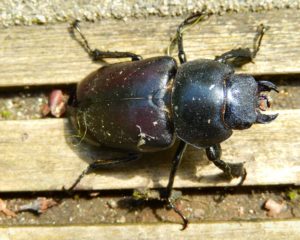
But happily, the bugs don’t seem to mind. I rescued this female Stag Beetle from a mat of weed in the pond: she seemed fine, holding on to my finger. She’s at least the third adult we’ve seen in recent weeks, so presumably many more have in fact hatched, a success for our loggeries and management approach.
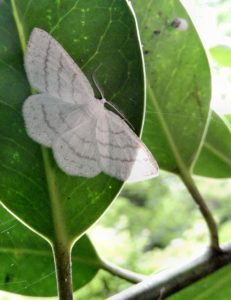
I’ve several times seen a biggish white moth rushing away to hide under bramble leaves. Today I managed to photograph one, which obligingly “hid” under a rhododendron leaf (yeah, we have some) and it’s the Common White Wave, Cabera pusaria. It likes Birch and Alder, so it must be living on our Birch trees here.

Mike instantly identified this handsome orange hoverfly as Sphaerophora scripta. It’s one of some 20 species he’s expertly noted in the reserve. A Volucella pellucens, the very large black and white species (with a pellucid whitish band on its abdomen, you really can see light through it) hovered unphotographably overhead.
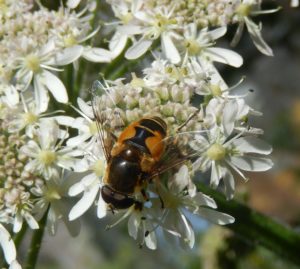
The Hogweed with its large white flowerheads is proving extremely attractive to different species of bees (honeybees, Andrena, Megachile leafcutters), bumblebees (tree, garden, buff-tailed, and others) and hoverflies, including this smart orange and black one. Mike says it’s a male Eristalis horticola, a new species for the reserve. Yay!
These are some moth (geometrid?) eggs on the underside of an English Oak leaf.
